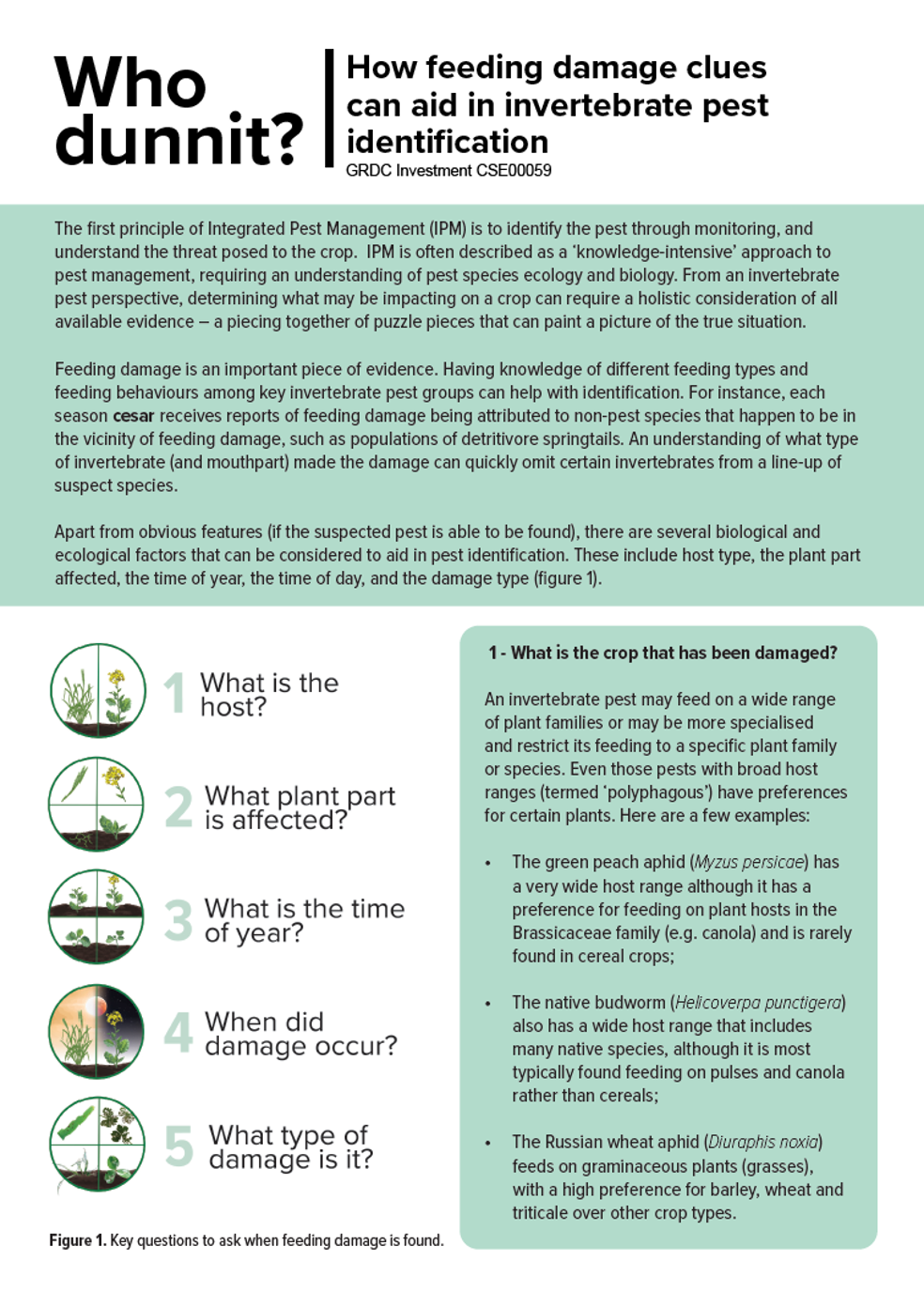How feeding damage clues can aid in invertebrate pest identification
How feeding damage clues can aid in invertebrate pest identification
Published: 14 Oct 2020
The first principle of Integrated Pest Management (IPM) is to identify the pest through monitoring, and understand the threat posed to the crop. IPM is often described as a ‘knowledge-intensive’ approach to pest management, requiring an understanding of pest species ecology and biology. From an invertebrate pest perspective, determining what may be impacting on a crop can require a holistic consideration of all available evidence – a piecing together of puzzle pieces that can paint a picture of the true situation.
Feeding damage is an important piece of evidence. Having knowledge of different feeding types and feeding behaviours among key invertebrate pest groups can help with identification. For instance, each season cesar receives reports of feeding damage being attributed to non-pest species that happen to be in the vicinity of feeding damage, such as populations of detritivore springtails. An understanding of what type of invertebrate (and mouthpart) made the damage can quickly omit certain invertebrates from a line-up of suspect species.
Apart from obvious features (if the suspected pest is able to be found), there are several biological and ecological factors that can be considered to aid in pest identification. These include host type, the plant part affected, the time of year, the time of day, and the damage type (figure 1).
Download PDF
Region: National
GRDC Project Code: CSP1501-002RTX,

